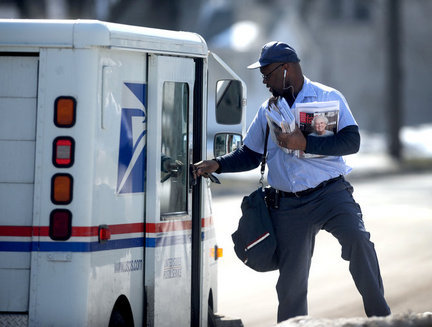The U.S. Postal Service says it may layoff 120,000 workers, remove collective bargaining restrictions, and rework empioyees’ health insurance and pension programs for employees.
The requests to Congress, made public Aug. 11, come as the result of billions of dollars of operating losses, including more than $3 billion of losses from April through June of this year. The USPS estimates its losses for the full fiscal year ending September 30 will top $8.3 billion.
The USPS stated it might default on payments to the federal government for the pension portion of the Federal Employees Retirement System. The postal service does not receive tax dollars. Revenue comes from selling postal services.
‘Past Brink of Insolvency’
“The United States Postal Service, our nation’s second-largest employer, is now past the brink of insolvency. This would not be tolerated in a private company,” said Rep. Darrell Issa (R-CA), chairman of the House Committee on Oversight and Government Reform, in a press statement.
“Incredibly, the unprecedented action to suspend these [pension] payments will only offer USPS an additional $800 million through the end of the year in liquidity, not even 10 percent of their projected deficit of $8.3 billion. USPS needs fundamental structural and financial reforms to cut costs and protect taxpayers from an expensive bailout.”
Union Blasts Proposed Changes
American Postal Workers Union President Cliff Guffey said in a statement the union “will vehemently oppose any attempt to destroy the collective bargaining rights of postal employees or tamper with our recently negotiated contract. Crushing postal workers and slashing service will not solve the Postal Service’s financial crisis.
“As we have pointed out many times,” he added, “postal employees are not the cause of the crisis.”
He blamed the financial problems at the USPS on a provision of the Postal Accountability and Enhancement Act of 2006 “that requires the Postal Service to pre-fund the healthcare benefits of future retirees — a burden no other government agency or private company bears.”
The mandate requires the USPS to fund a 75-year liability over a 10-year period and costs the USPS more than $5.5 billion per year.
Guffey also said the federal government is holding billions of dollars in postal overpayments to its pension accounts.
Postmaster General’s Requests
Postmaster General Patrick Donahoe has been trying to persuade Congress to alter the pension prefunding mandate. And he is asking for permission to tap into the pension account overpayments.
H.R. 1351, introduced by Rep. Stephen Lynch (D-MA) would allow the postal service to use the overpayments and the pre-funding monies. It would also keep workers’ collective bargaining rights and make no changes to wages, benefits or layoff protections.
Issa in June introduced a bill to fundamentally reform how the postal service operates and stop any government bailout.
He said the increasing use of electronic, paper-free technology “has caused a permanent decline in mail usage and the Postal Service must adapt its outdated brick-and-mortar model to meet current customer needs. Only serious cost-cutting structural reforms that reduce workforce costs and right-size infrastructure can save the Postal Service and prevent a multi-billion taxpayer funded bailout.”
100,000 Workers Already Gone
In a letter to members of Congress in June, Donahoe and the USPS Board of Governors stated the USPS has cut more than 100,000 workers and saved $12 billion in operating costs over the last four years. But the savings apparently are not enough to stave off possible collapse of the postal service.
Mail volume in that time has dropped 20 percent, and despite the savings, operating losses over that time have totaled approximately $20 billion, according to documents the USPS has sent Congress.
“The Postal Service is facing dire economic challenges that threaten its very existence and, therefore, threaten the livelihoods of our employees and the businesses and employees in the broader postal industry and overall economy” a USPS document on workforce reduction said.
In July the USPS released a list of 3,700 post offices across the country it said should be closed because of inefficiencies. The list caused a backlash among people in communities targeted for post office closings.
The postal service has also proposed ending Saturday deliveries.
Steve Stanek ([email protected]) is a research fellow at The Heartland Institute and managing editor of Budget & Tax News.





